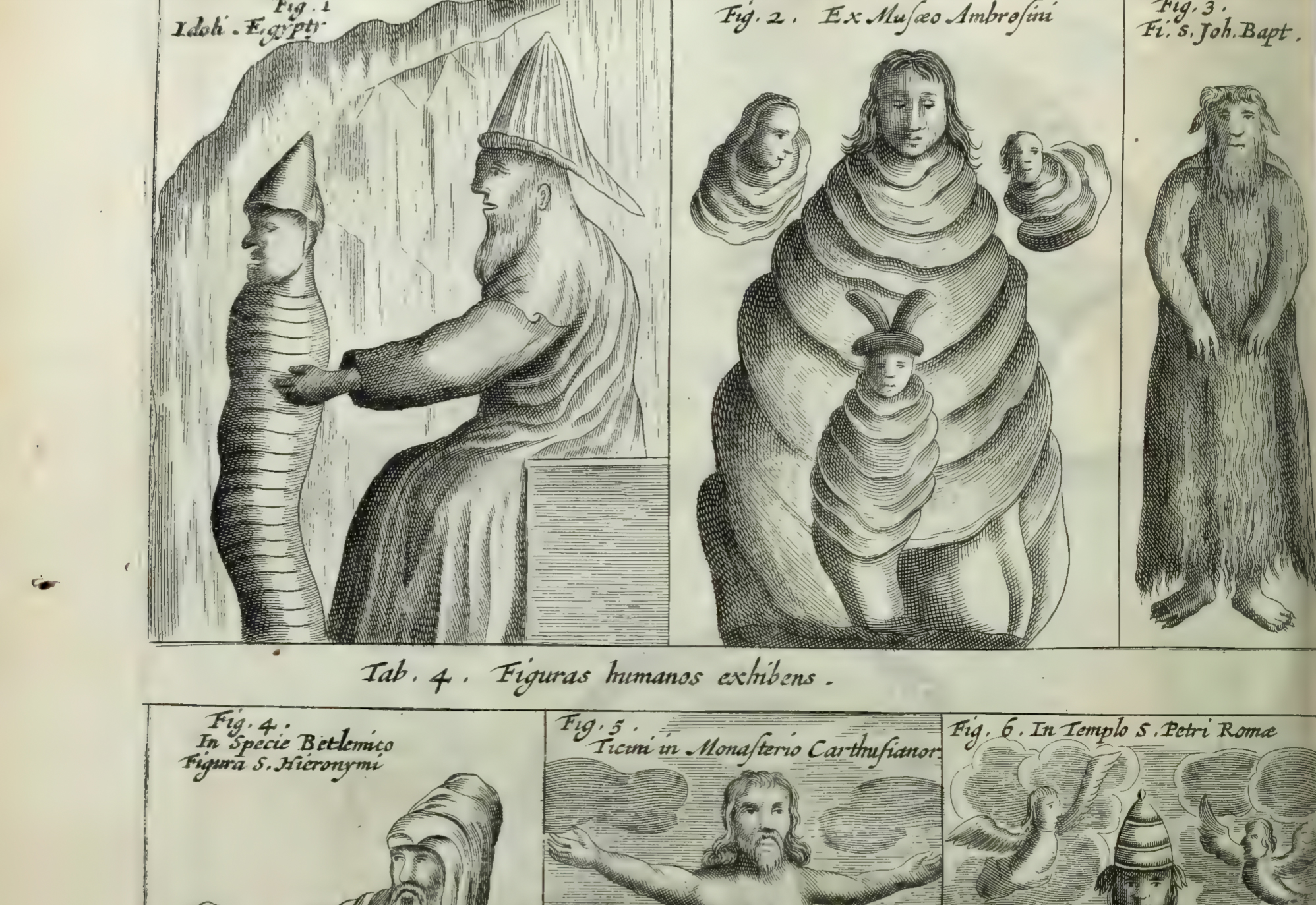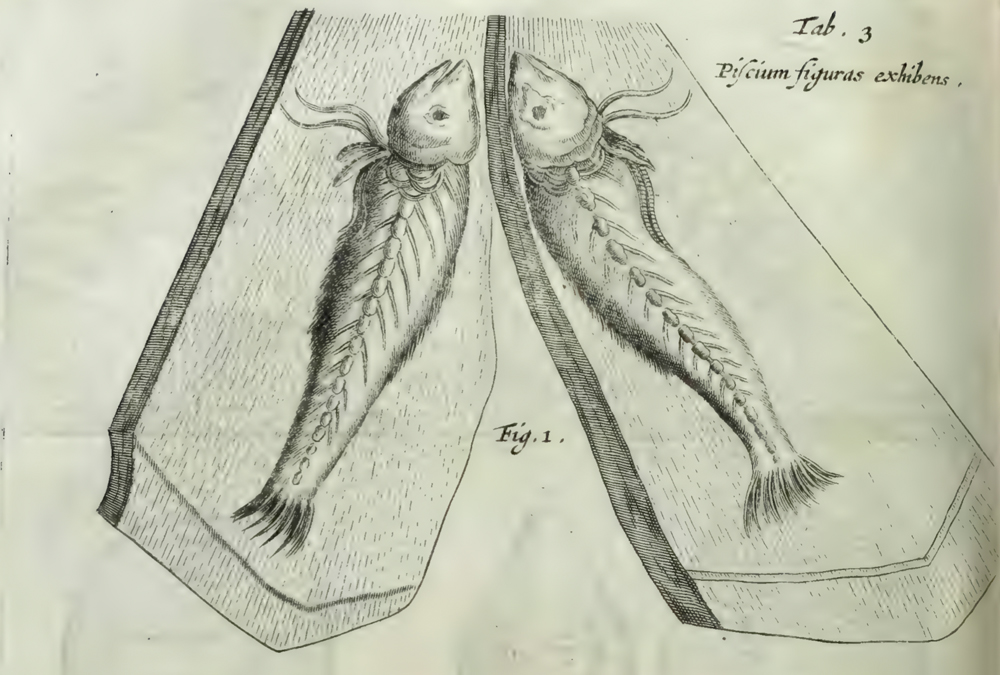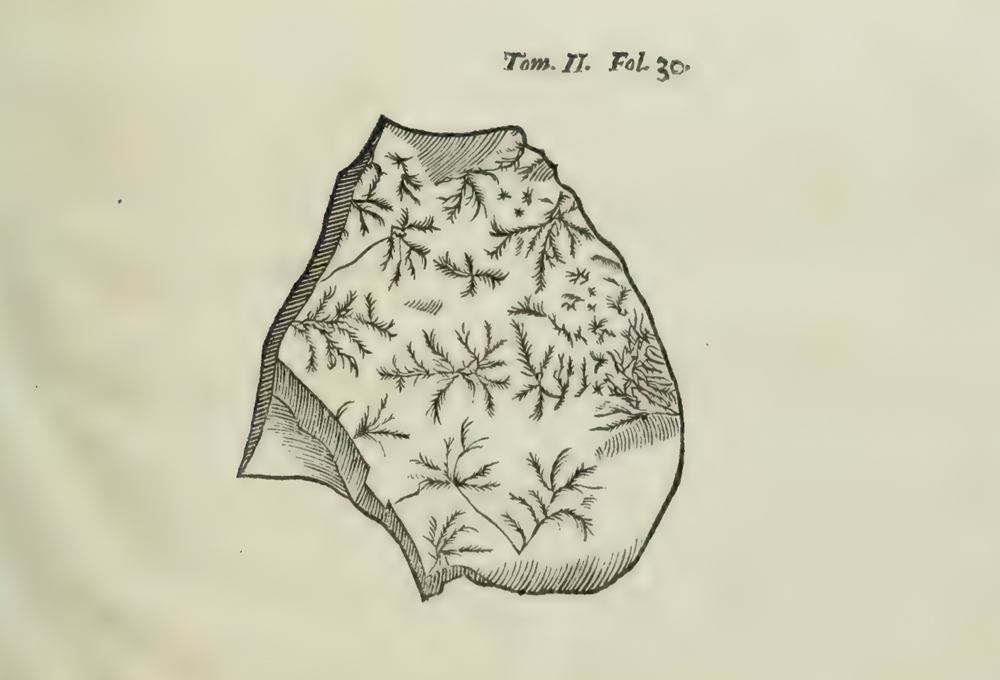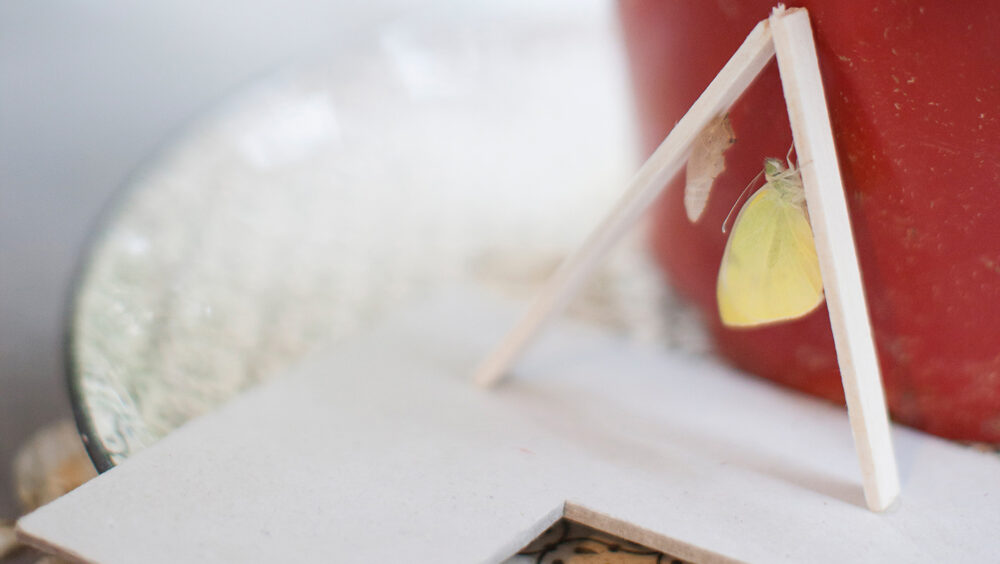
De lapidibus
Mundus Subterraneus, published in 1664, is the final result of German Jesuit scholar Athanasius Kircher’s geological investigations. Here we publish an extract from the chapter, De Lapidibus, in which Kircher muses on the cognitive phenomenon which will be later known as pareidolia – seeing faces and figures within natural formations, in this case within the cracks, veins and mineral surfaces of stones and rocks. We propose Kircher’s text as edited by Johann Beringer in his Lithographiae Wirceburgensis (1726), and later translated into English by Melvin E. Jahn and Daniel J. Woolf in The Lying Stones (1963).
I would recall to the reader, that, as the human phantasy, peering at the cloud-laden sky, imaginatively reads into the cloud formations a variety of things – sometimes dragons on the wing, at other times mountains, cities, or castles, again, crosses, human figures, and similar phantasmagoria – so too, even in spittle on the ground, we sometimes see a figuration of one thing or another.

Indeed, in our travels, gazing at mountain stretches, from a certain perspective we see a table, as the promontory of Good Hope; at other times a human face, as the promontory of Scylla in Sicily; again, a reclining man, as in the Camerino Mountain of the Apennines Mount Palermo is called Monte de Medaglia by the natives, because the stones, trees, and fragments resemble a human likeness imposed on a coin.
Sometimes on the rough surface of burnt bricks, we seem to see the outlines of insects, birds, etc. – not that Nature intended to produce such things, but by reason of a certain resemblance, the mind imagines that these things are there.

Reflecting on these commonplaces, one may not unreasonably ask concerning the origin of apparitions on stones.’ I answer that all these were generated by the flow of saline liquid. When this liquid seeps into appropriate earthy matter that is still soft, but is beginning to be riddled with cracks and tortuous ducts under the onslaught of desiccation, eventually, by the work of lapidific currents, all these coalesce into one hard and stony mass.
Then the liquid, following the pattern of the cracks and fissures, delineates the forms of beautiful rivers, possibly of fulsome trees, or of birds, or of insects, or quadrupeds, even a human likeness, or some member of the human body, all in accord with the dispositions of the matter […].

There is yet another reason, by no means a light one, supporting the formation of these apparitions by a fortuitous flow of liquid. It is that scarcely one of these images simulating animals is perfect. There is always something lacking to the full figure: an eye or nose will be missing in a head, an arm will be lacking a hand or fingers, a leg will have no foot, things which an artist would almost certainly remedy.
Wherefore, we must judge, not what, in fact, they are, but rather what the imaginative faculty pretends they are, as we said of the clouds, the mountains, the spittle, and the rest.
Recent articles

Southern California is many things. Quite infamously, it is known as a landscape defined by the automobile, from the emergence and diffusion of the highway system to fast food burgers, and the suburbanization of the United States. Walking this place then, would seem not only inconvenient, but ill advised. In… Read more »

What is today known as ‘whistleblowing’ could once take the form of interacting with a threatening gaze carved into the city wall. It is the case of the ‘boche de Leon’ or ‘lion’s mouths’ disseminated by the old Venetian Republic throughout its territory to suppress illegal activities. Through a close… Read more »

As he navigates through the recurrent lockdowns of the pandemic, stranded between hitchiking and muggings, job hunting and separations, Fabio Valerio Tibollo rediscovers photography as a powerful coping mechanism. Recording everything that happened around him for one year straight, from attending momentous events to finding curiosity in shots of simple living,… Read more »

